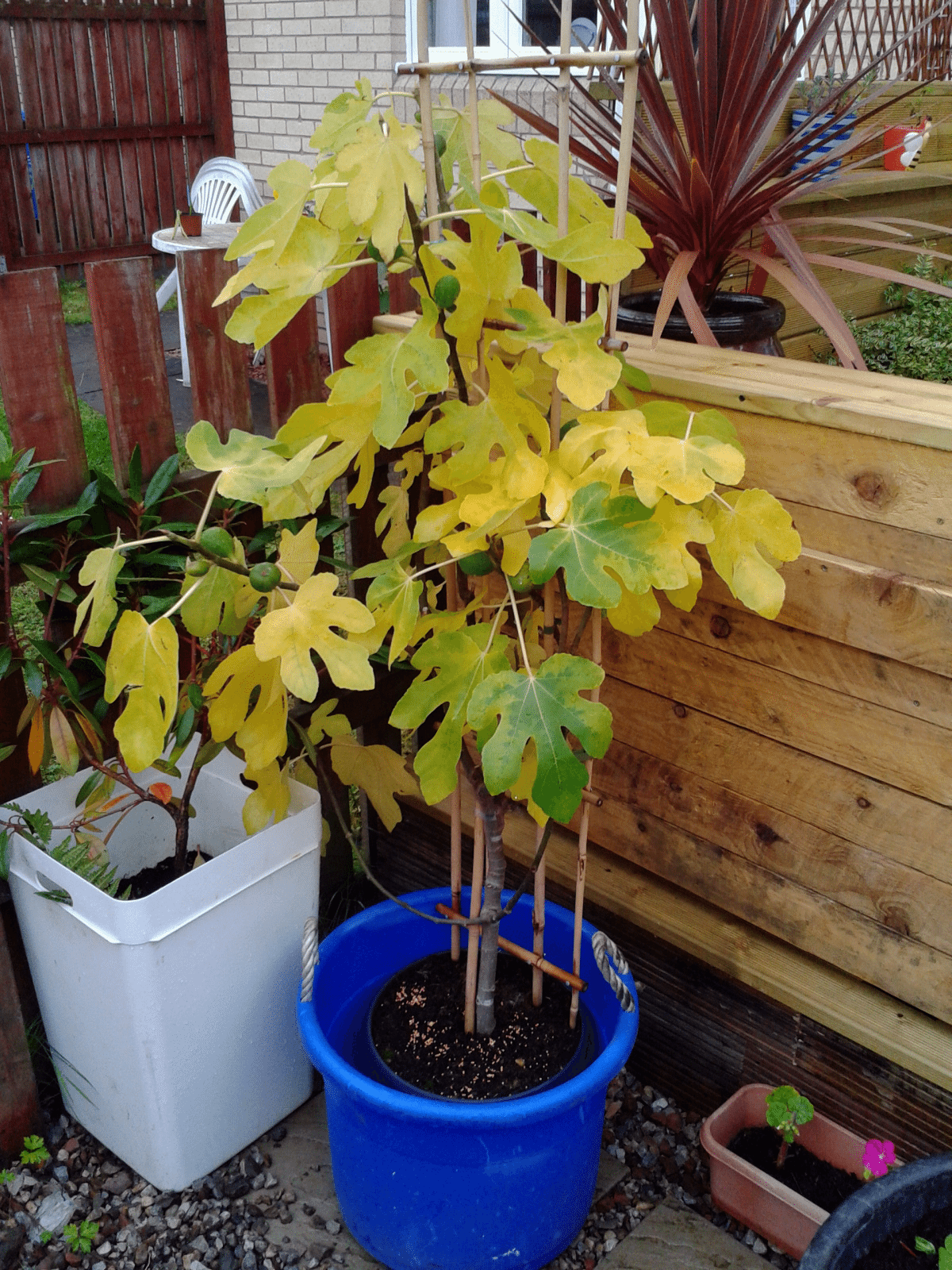Fig With Yellow Leaves - Reasons For Yellow Leaves On Fig Trees


Why are my fig leaves turning yellow? If you own a fig tree, yellow leaves will be a concern at some point in its life. Questions about yellow fig leaves show up every year on every gardening site and the answers often seem to contradict each other. However, if you look at the short list of the causes of yellow leaves on fig trees, they all have one thing in common: stress. Fig trees and their sweet fruit are gaining popularity with home gardeners across the globe. Once confined to the regions around the Mediterranean Sea, figs are now found everywhere in the world where the winters are mild. The trees are relatively pest free and easy to propagate, so why does that one simple question keep popping up? Why are my fig leaves turning yellow?
Reasons for a Fig With Yellow Leaves
Just like people, plants can suffer from stress, and stress is the cause of those yellow leaves on fig trees. The trick is to discover the cause of the stress. There are four areas of stress that will give you a fig tree with yellow leaves.
Water
Water, or its lack, is probably the largest cause of stress for your fig tree. Yellow leaves can be the result of either too much or too little water. We gardeners need to remember where our fig trees originated. The land around the Mediterranean is warm and dry. Fig tree roots grow close to the surface to absorb every drop of rain that falls. The water that isn't absorbed quickly drains through the porous soil. To avoid yellow fig leaves, make sure your trees get water about once a week through rain or your garden hose. Plant your figs in soil that drains well, and don't incorporate moisture retaining additives to the soil when you transplant. Instead, mulch well around the base of your tree to retain more water on the surface.
Transplant shock
Has your fig with yellow leaves been transplanted lately? Transplanting from a pot or to a new place in the yard can be stressful and cause the loss of up to 20 percent of the foliage on your fig tree. Yellow leaves can also be the result of fluctuations in temperatures. Temperature changes from the nursery to your yard can be enough to cause leaf drop and if the nighttime temperatures drop below 50 degrees F. (10 C.) outside of the dormant season, the results will be yellow fig leaves. The shock of transplanting normally rights itself, but you can also take steps to prevent transplant shock by ensuring proper planting requirements are met.
Fertilizer
Nitrogen is essential to healthy cell growth and division in plants. Without it, chloroplasts (the tiny cell structures that make your plant green) can't provide enough nutrients and energy to your fig. Leaves turning yellow or yellow-green when environmental factors are normal may indicate a deficiency in nitrogen. Yearly fertilization of figs should quickly cure the problem, but don't expect your fig tree's yellow leaves to turn green again. Those leaves must fall and be replaced by new, healthy green ones.
Pests
Lastly, insect infestation can cause yellow leaves on fig trees. Though rare on healthy trees, scale, spider mites, and mealybugs can all cause enough damage to foliage to cause yellowing and leaf drop. Insecticides or insecticidal soap will easily cure the problem. While yellow leaves on fig trees may be disturbing to the gardener, the condition isn't fatal and with careful attention to the stressors your tree may be suffering, the condition should be easily cured.
Gardening tips, videos, info and more delivered right to your inbox!
Sign up for the Gardening Know How newsletter today and receive a free copy of our e-book "How to Grow Delicious Tomatoes".

Jackie Rhoades began writing for Gardening Know How in 2010.
-
 Looking For Plants To Give You The Soft And Fuzzies? Try These 5 Fuzzy Leaf Plant Options
Looking For Plants To Give You The Soft And Fuzzies? Try These 5 Fuzzy Leaf Plant OptionsLovers of texture, drama, silver foliage and tactile plants will adore these special sensory garden additions. These fuzzy leaf plant options will leave you all aglow
By Susan Albert
-
 Get Ready For A Summer Of Hummers! Grow These Full Sun Hummingbird Plants and Flowers
Get Ready For A Summer Of Hummers! Grow These Full Sun Hummingbird Plants and FlowersIf you’re lucky enough to enjoy a sunny backyard, make sure you are maxing out on your pollinator opportunities and grow these full sun hummingbird plants and flowers
By Tonya Barnett